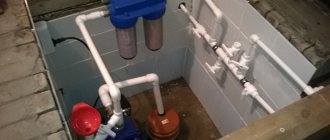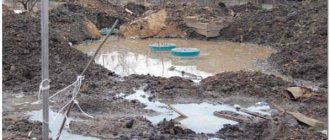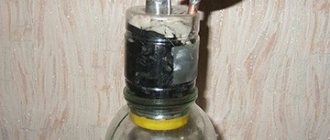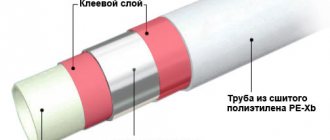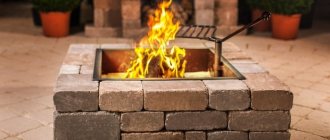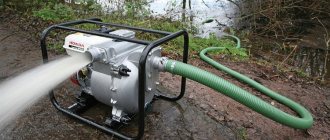An unpleasant situation, when the water in the well was clean yesterday, but today an oily film has appeared on the surface, completely paralyzes home plumbing and farming. It should not be eaten or watered. To solve the problem, you need to determine where the oil came from in the well and develop a strategy for collecting it and cleaning the entire structure. This is probably the most labor-intensive process; it is almost impossible to completely collect the oil from the surface of the water.
Selecting a Cleaning Option
The need to clean a well from silt and sand, and in some cases from soil, is understandable, since individual eternal sources of life-giving moisture do not exist. Their owners sooner or later face this problem, which requires an immediate solution.
It is bad if the aquifer is depleted, since at the end of the operational period you will have to decide how to remove the well quickly and easily, and thereby get rid of unnecessary structures on the site.
If we deepen the existing mine, this process will be difficult to implement and will be expensive. If the source is clogged, it is easier and cheaper to clean the well yourself than to build a new one.
To extend its service life, you need to follow a number of rules:
- Be sure to follow the drilling technology used. Carefully monitor the tightness of the casing pipe and monitor the condition of the filter.
- After drilling is completed, flush the source until clean water appears.
- Protect the well from surface water and contamination entering it by installing a caisson and cap. You can use sealing the top of the casing as a temporary measure.
- Before starting to operate the source, submersible pumping equipment should be selected and installed at the required height, taking into account its flow rate.
- It is advisable not to use vibrating pumps for water supply. The fact is that when working in a casing, they, to varying degrees, depending on the type of soil, contribute to the penetration of sand into the well or siltation of the adjacent soil. If you still had to use a vibration unit, then this can be done for a short time, but for continuous operation you should purchase a centrifugal pump.
- The well should not be allowed to remain idle without water being drawn. The ideal operating mode is considered to be daily pumping of at least several tens of liters. It can be provided if people live in the house permanently. When this is impossible, it is necessary to pump at least 100 liters of water from the source at least 2 times a month.
If you follow the above recommendations, then you will not have to solve the problem of how to clean the well from sand and silt in the future. As a result of compliance with the rules, the maximum effect from using the source will be ensured.
What to do if the water has a white sediment after boiling?
The preference for a specific softening water treatment technology should be given based on whether you want to solve this problem locally or on a large scale:
- If you only need soft drinking water, the filter jug we are all familiar with is quite sufficient. True, your home appliances will still work with water of increased hardness.
- Once you decide to take care of the long-term performance of household appliances, a good solution would be to buy special tablets or powders that soften water. This is an excellent option for dishwashers and washing machines, which, however, is completely unsuitable for treating drinking water if a white precipitate forms when the water is boiled.
- But let’s say you still approach the issue globally. Then we recommend that you think about installing reverse osmosis filters. They will soften all the water that comes to you from the taps, and you will not have to worry about your health or the condition of your appliances.
Clogging of sources with sand
This problem usually manifests itself in shallow wells in which the aquifer lies in a sand and gravel layer. If the source is properly equipped, if sand gets inside the casing, it will be in small quantities.
When the productivity of a well decreases and grains of sand can be seen in the water, there are the following reasons for their appearance:
- Sand enters from the surface as a result of a leak in the caisson or cap.
- The filter is incorrectly selected because its cells are too large.
- The integrity of the filter is compromised.
- The tightness between the sections of the casing structure is not maintained, because the thread was not tightened completely, or the welding was performed poorly, or mechanical damage to the plastic pipe occurred, or a hole appeared in the steel casing pipe as a result of corrosion.
If leaks occur inside the wells, they cannot be eliminated. If fine sand constantly penetrates through the filter, it is partially washed out as the water rises. But when large grains of sand get into the well, the source often becomes unusable.
So that the owner does not have to deal with the problem of how to clean the well on his own, you need to pay increased attention to the correct installation of casing parts and know how to choose a high-quality filter.
Our specialists know how to remove odor from well water.
Our company’s specialists are ready to help in choosing equipment to improve the organoleptic properties of drinking water. Attach laboratory results and monthly water consumption data to your application. We will find an inexpensive and effective solution to eliminate unpleasant odor from the well. You can get advice on any issues related to water treatment from the company’s managers by phone or mail indicated in the “header” at the top of the page or in the Contacts section.
Siltation of unused wells
During operation, small particles of calcium deposits, sedimentary rocks, clay, and rust begin to accumulate in the soil in the area where the filter is located. When a lot of them collect, the pores of the aquifer and the filter cells become clogged, and it becomes increasingly difficult for liquid to get through its openings into the mine shaft.
As a result of this, the flow rate of the source drops and you have to think about the problem, if the well is silted, how to clean it. Otherwise, the negative process continues until the water disappears. If the source is used regularly, siltation occurs slowly - over several decades.
If you do not constantly pump, you will soon need to think about how to clean the well of silt, since it becomes unusable after one to two years. Provided that cleanup is done in a timely manner before the spring completely dries up, there is a good chance that it will continue to supply people with water. Then water will begin to flow in the volume required for water supply to housing.
Actions to take if oil is detected in the well.
1. Try not to use the well, since the oil enters the water supply system, and also settles on the walls of the well when the water level drops. As a result, it will be much more difficult to clean the well and the system.
2. Try to establish and, if possible, eliminate the cause of the appearance of oil in the well. If it has leaked from the pump, remove the pump as quickly as possible.
3. Clean the well as soon as possible.
Drinking wells are vulnerable to the ingress of foreign objects and harmful substances. Pollution occurs due to poor-quality construction, neglect of timely cleaning and repairs, unreliable insulation of the head and joints of the rings, industrial discharges entering the feeding aquifer, saturation of sewage drains or high water. Gas stations, car washes, garages, septic tanks and garbage dumps must not be located in the neighborhood. It turns out that to keep the water clean, you need to keep an eye on the well.
Beautiful colored spots? But they poison your life by making the water undrinkable.
Self-cleaning methods
There are several options for how to clean a well with your own hands if silting or sanding has occurred in it:
- pumping;
- flushing by circulating liquid;
- blowing with compressed air.
There are more cleaning methods:
- Bleeding with a vibration pump.
- Washing with pumping equipment from the surface.
- Flushing using two pumps.
- Extracting sand using a bailer.
- Elimination of pollution by water hammer.
- Flushing with a gas-air mixture.
Pumping the source with a vibration pump
This method is considered not very effective, but easy to implement. To restore productivity, wells are cleaned of sand with a vibration pump. Its experts do not recommend using the source for a long time during operation, but for cleaning it is better suited than a circulation pump.
The fact is that the vibration pump is undemanding to water quality. It easily tolerates liquid contaminated with sand and is even capable of absorbing small pebbles. True, the abrasive quickly damages the check valve. Before clearing the well of sand, you need to make sure the part is working.
This element is cheap, and you can replace it yourself in just a couple of minutes. The price of vibration equipment is several times lower than that of a circulation pump that is sensitive to abrasive particles. Even if it breaks, the financial losses will be small.
The pumping method using a vibrating pump is not able to cope with heavy siltation of the soil, but it is a good solution for how to clean a well from sand, since it can remove it in large quantities from the casing, but provided that the depth of the source is small.
When raised to a height of more than 30 - 50 meters, the performance of the vibration pump drops significantly, and only a unit with a bottom liquid intake is suitable for cleaning. In order for it to actively collect contaminants, it must be lowered onto sand deposits, raised only a few centimeters above the bottom.
As the sand is removed, its level will begin to drop, and then the pump should be lowered. Continuous operation of the equipment should not last more than 30 minutes, after which it is turned off for 10-15 minutes, allowing it to cool.
When the sand contains pebbles whose diameter exceeds 3-5 millimeters, they will fall under the membrane and impede the water flow. It is possible to free the unit from them, but before cleaning the pump in the well, it must be raised to the surface.
If you choose a vibration pump, you should know that it is quite expensive and not always effective, but its design is simple and does not require physical effort to operate.
Oil in the well - reasons
If there is a pump, then there could be a leak. It contains about a glass of oil. It is enough to cover the mirror with film. In practice, there were cases when the pump broke down at the stage of pumping the well. Therefore, if it stops working, you need to immediately turn it off and remove it before all the oil leaks out. Oil stains also appear from the installation of reinforced concrete rings for industrial use with traces of lubricants. They are cheaper, there is a temptation to save money, but you have to pay many times over.
Washing with pumping equipment from the surface
There is an effective method for removing fine sand, rust and silt from the casing. To do this, water is supplied to the source from outside. In order to clean a well in a country house or near a house, and not turn the surrounding area into a swamp, the whole process is organized in a closed cycle.
This should be done especially if there is no nearby source of clean water. Experts do not recommend using liquid from open reservoirs. Before flushing the well from sand and other contaminants, you need to prepare containers whose volume corresponds to the capacity of the casing pipe from bottom to top.
Using a pump, liquid circulation is organized between the reservoir and the source. As a result, dirt accumulates at the bottom and must be removed periodically. This requires a powerful pump, and chemicals can be added to the solution.
For example, phosphoric acid is capable of dissolving calcium deposits and layers of rust. The acid can be extinguished with baking soda, and after flushing the well from sand and other deposits using chemicals, it is pumped for 6 hours. Instead of a head, a nozzle is installed at the mouth of the source, which sends the liquid back to the reservoir.
You can perform flushing by pumping water into the well from your neighbors' water supply. In this case, containers are not required, but you need to prepare a drain for the dirty liquid and prevent it from getting back into the casing. Water is supplied to the source with a hose - it must be of such length that it can lie at the bottom. Washing from the surface effectively cleans the filter.
Flushing with two pumps
It is difficult to flush a well with a depth of more than 50 meters using a vibrating pump or by supplying water from the surface. The washing result can be improved by using two different types of units - surface and deep.
Before cleaning a water well in a country house or near a private house, one pump is installed at the top - it sends liquid to the bottom of the source, raising contaminants to the top. The second of the pumps, a submersible centrifugal pumps water with silt and sand to the surface.
To extract contaminants, you can use the same pump that is located in the well; it will not need to be either raised or lowered below its suspension point. The main thing is, before cleaning the well, lower the hose to the bottom of the narrow casing pipe, next to the submersible unit.
Extracting sand with a bailer
The source cleaning technology with a bailer is effective when it is necessary to remove a large amount of pebbles, sand and compressed fine sediments from the casing pipe. But it is practically useless when you need to clean the filter and the surrounding soil.
The bailer consists of a piece of steel pipe 1 - 1.5 meters long, on one side of which there is a valve, and on the other - a lever-eye for the cable. The valve is a heavy steel ball held in place by a washer attached to a thread.
This method is often used when cleaning artesian wells. It is advisable to completely pump out the water from the casing. With a sharp movement the bailer is lowered to the bottom of the source. When it hits the sand, the valve opens and a certain amount of sand penetrates into the device.
Raising the projectile to the surface, the contaminants are shaken out of it. This process is repeated several times. You can work with a bailer manually, but it is a difficult task, even if you work together. To raise and lower the projectile and steel cable, it is better to use a tripod equipped with a winch or pulley.
You can purchase a bailer of a specific diameter from a specialized enterprise, make it yourself, or rent it. When using it, you need to act carefully when approaching the projectile to the filter, since there is a possibility of damaging the fine mesh. It is better to remove the remaining deposits at the very bottom using another method that does not involve impact.
Elimination of pollution by water hammer
The use of water hammer is especially effective if it is necessary to get rid of silt deposits in the filter or the soil adjacent to it. When there is no sand in the casing pipe, and water after prolonged flushing or pumping does not flow into the well in the required volume, this may indicate that the soil is heavily silted.
As a rule, when a mud plug forms, it can be removed with your own hands using water hammer. Before cleaning a well in a country house or local area using this method, you will need to make a simple projectile, which is a heavy pipe, the diameter of which is slightly smaller than that of the casing. It should fit inside her with a small gap.
The end of the projectile is welded tightly, and at the opposite end there are eyes for securing the cable. The well is filled several meters with water, to which it is advisable to add phosphoric acid, which helps get rid of rust particles and calcium deposits.
The projectile is sharply lowered into the liquid, then raised and dropped again. The steps are repeated for several hours, and then the casing is filled to the top with water, after which it is flushed or pumped. If the required result is not achieved, the procedure is repeated. Often you have to do it a dozen times to get rid of calcium or silt deposits.
Efficiency of cleaning measures
The ingress of a small amount of oil and the prompt action to neutralize it provide a 100% result in cleaning the well. If possible, you should pay attention to the composition of the oil. As it passes into the aquifer, it is broken into fractions, some easier to remove, others more difficult.
A small example from life: an oil film was discovered in a well, the owner did not call a team from the company servicing the wells, but went to get advice on the Internet. A few days later the film disappeared. Science has proven that not a single substance appears from nothing and disappears into nowhere. The oil just started to disintegrate and remained in the water. Its presence can only be detected by extensive chemical testing of water samples.
After completing the cleaning and good water tests, you need to flush the water supply. Household appliances (boiler, washing machine) will have to be washed thoroughly.
Flushing with a gas-air mixture
The cleaning method using a gas-air mixture is called bubbling. In this case, the well is purged with a compressor. In this case, a sprayer is lowered to the bottom of the well so that it is located in the thickness of silt or sand. Then a powerful compressor supplies compressed air.
The resulting bubbles rise to the surface, carrying the contaminants with them. To ensure the removal of dirty water, flushing liquid is constantly added to the source manually or using a hose. You can use closed circulation of water between it and a previously prepared container.
Experts do not consider the combined method of flushing with simultaneous blowing of the well with compressed air effective and efficient. The fact is that this process moves slowly and may take several days or weeks to complete if the contamination is severe.
Bubbling has advantages over alternative methods:
- Sometimes it is the only option for cleaning the source and filter if pumping with water is unsuccessful.
- The implementation of effective methods for removing sand using a bailer or silt deposits by water hammer is accompanied by the creation of serious vibrations that can damage a filter made of a fine mesh. The likelihood of fragile, worn-out steel or plastic casing breaking or collapsing is even greater. As a result, the source may be completely disabled.
- Knowing how to blow out a well with a compressor using a gas-air mixture, you should not be afraid of troubles. This method is the most gentle technology that will not cause any damage.
How to remove oil film
Well cleaning is performed if the source of the problem has been identified, so as not to waste time and money. If it was a one-time hit (the pump leaked), the oil film is removed, bacteria have multiplied - pumping and disinfection, etc.
The first stage of cleaning from oil film is to collect the remaining oil using a surface pump and neutral sorbents. The oil is well absorbed by paper, dry sawdust, and polyurethane foam. On an industrial scale, special absorbing gels are used. There are interesting studies on burning out pollutants.
Having removed the oil film as much as possible, you need to wash the walls of the well from its residues. This is done using a high pressure washer and parallel pumping. Sometimes the walls of the well need to be scrubbed manually. To completely get rid of the consequences, you will need to pump out the water and replace the bottom filter, if one was used. The soil bottom of the well needs to be cleaned to a shallow depth. Along with pumping, the seams are checked and restored.
It is strictly forbidden to use chemical detergents to remove oily stains. They dissolve fat perfectly, but they have no place in the well. Solving one problem creates several more. Surfactants are persistent and dangerous pollutants.
The professional arsenal of devices uses special oil product collectors that can collect contaminants and impurities.
Cultures of some bacteria have shown high efficiency in purification from petroleum products. This is a good breeding ground for them.
It is worth considering that oil pollution is already a global problem.
Selecting a cleaning method
Even a specialist will not always be able to accurately determine the cause of a drop in well production. Most often, pollution is complex. If the pump pumps out liquid with sand, this does not mean that the soil is not silted. When cleaning a well yourself, you need to be patient. It may be that to get the desired result, you will need to use several methods, sequentially.
For example, you can solve the problem of how to clear a well of clay in several ways:
- using a bailer;
- using a vibration pump;
- with simultaneous use of two pumps.
Experts always recommend starting cleaning by pumping with a vibration pump.
If the result is negative, proceed to washing. When the source has almost dried up, flushing is performed first. If you need to clean a well from sand, since there is a lot of it at the bottom, a bailer will help to cope with the problem, but it is used only for steel casing pipes. For polymer trunks, bubbling is used exclusively. Finally, you can move on to water hammer technology if the aquifer has not dried out. Renting washing equipment is expensive, but the cleaning efficiency is higher.
Why is it dangerous?
Liquids with an increased concentration of iron, calcium or magnesium salts have an unpleasant, slightly salty or bitter taste. With regular use, the taste buds get used to the harshness, so the inconvenience is often not noticed. White sediment in water is dangerous not only for people, but also for equipment.
For living organisms
Liquids with a high content of mineral salts negatively affect the health of living beings. Regular consumption of insoluble substances provokes the formation of kidney stones and clogs blood vessels. The longer harmful moisture is used, the more destructive the result.
Why hard liquid is dangerous Source 4.bp.blogspot.com
The presence of white sediment in water negatively affects human skin. Detergents do not lather well and dissolve in water. The components close the pores, disrupting the natural breathing of the upper integument. After washing your hair, the protective layer is destroyed from the hair, so the following is often observed:
- dandruff;
- itching;
- baldness.
The characteristic creaking of skin or hair after washing is the first sign of a problem. Using moisture with a high concentration of iron salts leads to dehydration and dryness. Restore natural balance with creams, balms and masks.
White sediment in the water slows down the cooking process. A high concentration of mineral salts interferes with both the cooking of meat and the absorption of proteins by the digestive system. Regular stress on the stomach and intestines leads to disturbances in the functioning of the body.
Damage to moisture with white sediment Source tribunecontentagency.com
The presence of white sediment in water is equally harmful to both humans and pets. When feeding pets dry diets, there is a risk of urolithiasis. Bathing cats and dogs in hard liquids causes hair loss.
White sediment in water is dangerous for plants. A high concentration of insoluble salts changes the mineral composition of the soil. With regular watering, a light coating appears on the top layer of soil and on the roots. Due to the hard layer, the underground parts do not absorb nutrients well, which leads to uneven development and death.
